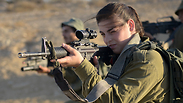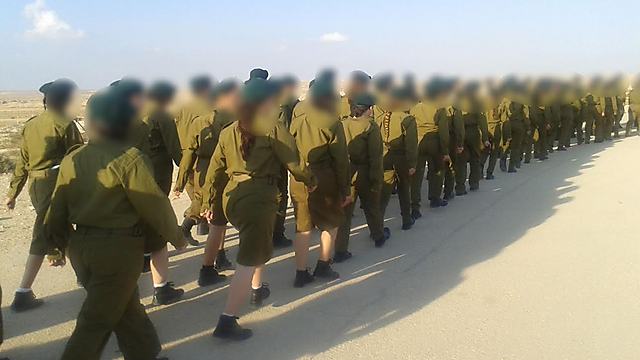

A dramatic battle over the new face of the IDF
Analysis: While the rabbis are trying to stop this trend, the number of religious girls joining the army has increased from 900 to 2,135 since the beginning of the decade. Meanwhile, the army has expanded the mixed combat units and is even considering a platoon of religious women fighters. The IDF needs these girls, but why hasn’t the chief of staff condemned Rabbi Levinstein’s comments against them?
The comments made by Rabbi Yigal Levinstein, head of the Bnei David pre-army academy in Eli, as well as the apology for the style but not for the content, should be seen as part of a big, dramatic battle over the new face of the IDF, which has been rapidly changing in recent years and creating tensions.
The numbers tell the whole story: At a time in which 27 percent of the boys do not enlist and another 17 percent do not complete their service, in which 42 percent of the girls do not enlist and 15 percent fail to show up at the induction center to be released; in an era in which the number of career soldiers has reached a new low and the army discharges some 100,000 reserve soldiers and decides to use them for training only—the army needs women in combat roles more than ever.

It’s also a question of demand. At a time when the demands for technological systems—like the cyber security systems—grow, as well as the demands for other units in the Intelligence Directorate, and at a time when the operational needs for the borders with countries with which we are at peace—Egypt and Jordan—become more essential, the IDF needs women.
Not to mention the fact that, at the same time, the army has launched a move of cutting down mandatory service by four months.
Fortunately for the heads of the IDF, an encouraging trend has been recorded since the beginning of the decade among all girls volunteering to serve as fighters.
Their number has increased from 500 to 2,100. The number of religious girls who join the army has recorded an impressive growth: From 900 to 2,135. The IDF has expanded the mixed combat units, and it is opening the fourth regiment which has 60 percent girls and 40 percent boys.
Religious girls avoid the fighting corps because of the joint service, but voices of change are certainly being heard there too.
A first platoon of girls seeking to serve together with boys is currently being formed, and the IDF is expected to accept their request. In order to thoroughly understand the battle over the face of the IDF, however, we must also look at the composition of the male fighting corps, which are comprised mostly of religious soldiers and residents of the periphery.
The IDF tries to stay as far away as possible from the word “religionization,” but anyone who hangs around the combat units of Golani, Givati, the Paratroopers Brigade and elite units like Sayeret Matkal, Shaldag and Shayetet 13, which used to be a secular stronghold, cannot ignore the dramatic change taking place.
In the Bahad 1 training base, 30 percent of the cadets are religious, and in the Gefen Territorial Brigade, which trains the combat cadets, their number reaches 40 percent.
The numbers of people making careers in the army are persistently growing, because it’s much easier for brigade and regiment commanders to enlist a grownup officer who graduated from the Eli pre-army academy for a demanding service than a secular soldier from central Israel who sees the officers’ course as above and beyond people’s expectations.
And so, we are witnessing the formation of a significant and welcome mass influx of religious and ethical officers with demands of their own, who have another authority they accept, which is the rabbis.
This has led to the slow development of a battle over values, which reached its peak in the conflict between the Education Corps and the Rabbinate.
In the current climate, the IDF has no intention to, and can’t really give up, either on girls’ service in combat units or on the enlistment of religious girls, who no longer settle for serving as teachers and instead choose roles in high-quality units in the research department of the Military Intelligence Directorate and in Unit 8200.
The rabbis have tried to prevent it, but have failed miserably both in the absolute numbers and in the fact that these girls come today not only from religious schools but also from the prestigious seminaries.
The army, on its part, is failing to converse and even to explain that in the pilot project for integrating girls into the Armored Corps, which is beginning this month, there is no intention for them to serve with boys in the same tank—but that if they do meet the physical requirements, the tank will have only girls in it.
The failure doesn’t end here. The fact that IDF Chief of Staff Gadi Eisenkot didn’t condemn Rabbi Levinstein’s comments and back the female soldiers in his own voice, or through an IDF spokesperson statement, was particularly annoying. The person who did do just that was Defense Minister Avigdor Lieberman during a visit to Washington. It’s true that Eisenkot’s assistant, Colonel Ronen Manelis, issued an order about a month ago not to invite Levinstein to the army units, but a clear and profound moral statement—like the one Eisenkot made after the Elor Azaria shooting affair in Hebron—should have been issued immediately too.
















